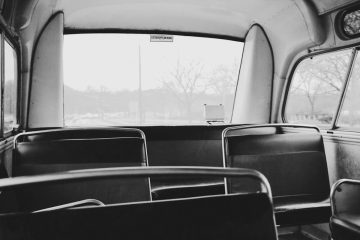What Happened On September 6th?
On September 6, 1901, President William McKinley attended a public reception at the Pan-American Exposition in Buffalo, New York. McKinley spent the day giving speeches and attending events, engaging with the public as part of his routine. The Temple of Music, where the reception took place, attracted a large crowd eager to meet him. Despite concerns from his security team about his accessibility, McKinley insisted on connecting directly with the people.
At 4:07 p.m., as McKinley greeted attendees in a receiving line, Leon Czolgosz, a 28-year-old anarchist, approached him. Czolgosz hid a .32-caliber Iver Johnson revolver beneath a handkerchief wrapped around his right hand. When he reached the front of the line, Czolgosz fired two shots. One bullet grazed McKinley’s shoulder, while the second struck his abdomen, piercing his stomach. McKinley staggered back, wounded, but remained calm. He immediately expressed concern for his wife, saying, “Be careful how you tell my wife.”
McKinley’s security detail and bystanders quickly subdued Czolgosz and began beating him. Despite his injuries, McKinley instructed them to stop, saying, “Let no one hurt him.” This gesture reflected McKinley’s unwavering belief in compassion, even in moments of personal crisis.
After the shooting, McKinley was rushed to the exposition’s hospital. The facility, though modern for its time, lacked the necessary tools for treating such a severe wound. Dr. Matthew Mann, the attending physician, performed emergency surgery to close the stomach wound but failed to locate the second bullet. Despite the hospital displaying an X-ray machine as part of the exposition’s scientific exhibits, the medical team did not use it. Some historians believe that had the X-ray been used, the doctors might have found the bullet and prevented the infection that ultimately claimed McKinley’s life.
For several days after the surgery, McKinley appeared to recover. He remained in good spirits, even asking for solid food like toast and tea. His medical team expressed optimism, and the public believed he would survive. Vice President Theodore Roosevelt, reassured by reports of McKinley’s recovery, continued his vacation in the Adirondacks.
Although McKinley showed signs of improvement, his condition took a turn for the worse. The second bullet, which doctors had failed to remove, caused unseen internal damage. In the days following the shooting, gangrene began to spread through his abdomen. On September 13, McKinley’s condition deteriorated rapidly. His fever spiked, and he lost consciousness as the infection overtook his body. Doctors fought to save him, but their efforts proved futile. William McKinley died early on September 14, 1901, his final words being, “It is God’s way. His will be done.”
McKinley’s death echoed the fate of President James Garfield, who had also died from complications after being shot. Like Garfield, McKinley suffered from infections caused by inadequate medical care. This eerie similarity between the two assassinations highlighted the challenges of treating gunshot wounds in the early 20th century.
Leon Czolgosz, inspired by anarchist beliefs, had planned the assassination for weeks. He viewed McKinley as a symbol of capitalist oppression and believed that killing him would bring about political change. Czolgosz attended a speech by the anarchist Emma Goldman in Cleveland before carrying out the attack, though she did not advocate for violence directly.
After the shooting, police arrested Czolgosz immediately. His trial proceeded quickly. Czolgosz displayed little emotion or remorse and cooperated minimally with his defense team. Within a week, the court convicted him of murder and sentenced him to death. On October 29, 1901, officials executed Czolgosz by electric chair at Auburn Prison. To prevent anarchist sympathizers from turning Czolgosz into a martyr, prison officials dissolved his body in acid after the execution.
In the aftermath of the assassination, authorities briefly arrested Emma Goldman for questioning, suspecting her involvement due to her radical speeches. They released her shortly after, finding no evidence linking her directly to the crime.
The hospital, though considered modern, lacked the necessary tools for sterilizing equipment and treating trauma. At the time, gunshot wounds often led to deadly infections, as even minor lapses in antiseptic practices caused significant complications. McKinley’s initial signs of recovery masked the underlying dangers that infection posed, and by the time his condition worsened, it was too late to intervene effectively.
McKinley’s assassination forced the U.S. government to rethink presidential security measures. Prior to McKinley’s death, the Secret Service existed primarily to combat counterfeiting, offering minimal protection to the president. McKinley’s murder prompted a significant shift, leading to the Secret Service’s expanded role in providing full-time protection to the president, a practice that would become a standard in the years that followed.
McKinley’s funeral also marked a turning point in how national events were recorded and shared with the public. Thomas Edison’s film company captured McKinley’s funeral procession on camera, making it one of the first presidential funerals filmed. This new technology allowed Americans across the country to witness the event, even if they could not attend in person.





